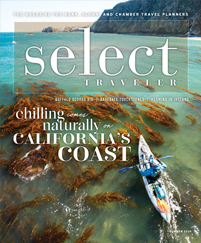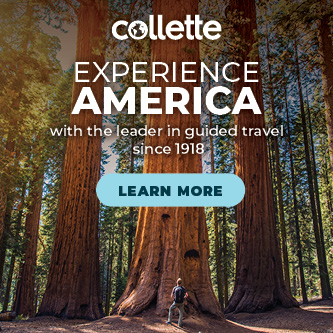Some cities are inextricably linked with certain key attractions: Philadelphia and Independence Hall, St. Louis and the Gateway Arch, and Orlando and Walt Disney World. In many Southern destinations, these can’t-miss sites are museums, giving groups a slate of ways to enjoy the site through private tours, on-site meals and receptions, and other exclusive experiences.
Kentucky Derby Museum
Louisville, Kentucky
Every May since 1875, thousands of spectators have gathered in Louisville to experience the two-minute race and week-long festival that is the Kentucky Derby. But if your group is in town any other time, they can still get in on the excitement at the Kentucky Derby Museum.
Tours, included in the museum’s regular admission, begin with the 18-minute, ultra-high-definition, racetrack-shaped 360-degree film “The Greatest Race,” which follows a foal from birth to training, climaxing with the final stretch of the most recent Derby race. “It pulls on your heartstrings and makes you want to be a winner,” said group sales manager Karen Schneider. “Coaches from visiting sports teams playing at the University of Louisville bring their team to watch it for inspiration. Even if I’m having a down day, I come over and watch the movie.”
The tour continues with a guided walk through Churchill Downs, focusing on the racetrack’s history; taking in the homestretch, where groups can catch the end of a race if there’s one on that day; and finishing with a visit to the museum’s resident thoroughbred and miniature horses.
Groups with additional time can choose from four specialty tours and behind-the-scenes experiences. The Backstretch Breakfast tour takes groups through the receiving barn to the track kitchen for a hearty meal while they watch the horses warm up in the morning. “Very few people get to see that viewpoint with the twin spires in the background,” said Schneider. “We take them to the rail to hear the horses, and even if you’re not a horse fan, I’ve seen people get chills over it.”
Hat-ittude allows groups of any size — Derby Museum staff have done the activity for 3,000 at the ABA Marketplace — to create their own custom Derby hats and take them out on the Downs for photo shoots. For the Off to the Race activity, Schneider sets up betting windows and gives group members $5,000 in play money to bet on prerecorded races. For the holidays, they turn it into the reindeer games, with reindeer names for the horses. Small groups of 20 or fewer can take the Inside the Vault tour, where they can see Derby artifacts that are new to the museum or too fragile to display, accompanied by the museum’s curator.
Birmingham Civil Rights Institute
Birmingham, Alabama
Organized chronologically from the early 20th century to the present, the interactive galleries of the Birmingham Civil Rights Institute — at times affirming, at times haunting and at other times simply inspiring — show visitors not only the progression of the American civil rights movement, but also how it has had a global impact and affected international human rights.
“The first time I came, I stayed for three hours,” said Laura Caldwell Anderson, the institute’s archivist and director of special projects. “I tried to see everything. We have films throughout the galleries, Bull Connor’s actual tank he rode around in juxtaposed with a tank in Tiananmen Square and a replica of the freedom rider’s bus cut in half that is really moving. Usually, you get into a gallery and you don’t want to move on.”
The museum has combined basic elements like videos into compelling experiences, as is the case with old clips of the Children’s Crusade, which guests view on old televisions set up in the window of a mock television repair shop. And some of the museum’s artifacts inspire pilgrimages on their own.
“We have the jail cell bars behind which King sat when he wrote the letter from Birmingham Jail, and people just make a beeline there and pray,” said Caldwell Anderson. “That’s almost a site unto itself.”
The visit to the institute is typically self-guided, but Caldwell Anderson says tours can be organized for groups short on time, and she can also connect groups with locals who are veterans of the civil rights movement, for historic tours of the surrounding Birmingham Civil Rights District.









